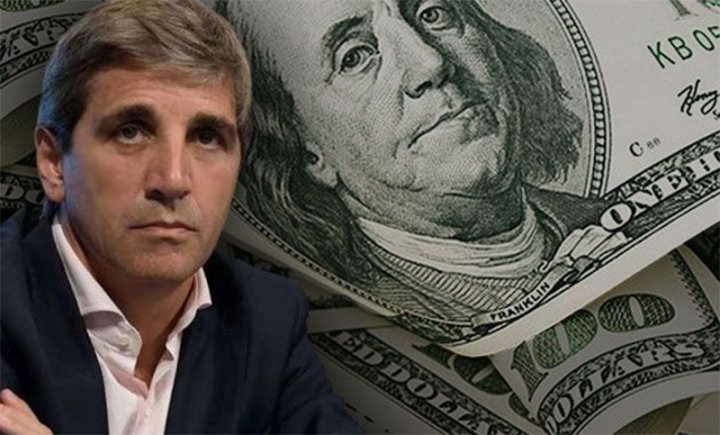
The latest statement issued by the IMF requires the government to accelerate the increase in the official price and rural businessmen were already pushing for a devaluation by exporting the bare minimum. To this combo the Government added negative real interest rates that harm peso savers and a string of political crises that exposed its weakness.
These factors have caused the blue dollar to accumulate an increase of more than $145 so far in June and we take into account that, in May, this exchange rate had already climbed $185 (17.8%), after three months of relative stability. Caputo’s initial devaluation, added to the strong recession caused by the adjustment, had achieved a small period of calm on the exchange front after the open crisis during the Peronist administration; but the alchemies of the Minister of Economy had an ephemeral effect.
The keys to financial instability:
- The IMF has come to demand that the government devalue with the aim of accumulating reserves so that the country pays the debt with the organization, but also with private creditors, Wall Street speculators. The fund also asked for the end of the “blend dollar”, the benefit to agro-exporters so that they can settle 80% at the official price and 20% at the “cash with settlement” (CCL), a financial dollar with a higher price than It does not enter the Central Bank.
- The field continues to liquidate in dribs and drabs and complicates the entry of foreign currency. This Wednesday the Central Bank (BCRA) had to sell 76 million dollars due to the low foreign exchange settlement of exporters who continue to pressure for devaluation. In the midst of a slower pace – and greater irregularity – in BCRA purchases, expectations grow for the dynamics of reserves in the face of a low accumulation of foreign currency in a key quarter due to the harvest and the prospects of the usual lower supply of foreign currency in the second semester.
- Inflation between December and May (latest data published by Indec) accumulates 107%, exceeding the 100% devaluation carried out by Caputo as soon as he took office. The rise in the official price of the North American currency of 2% per month is falling behind the average price, which seems to have stagnated between 4 and 5%. The Government intends not to move from its plan with the objective of lowering inflation, but month after month it accumulates more contradictions.
- With the dollar stocks in force, one of the alternatives for peso holders are fixed terms, but the Ministry of Economy lowered the interest rate to 2.9% monthly, remaining well below inflation. In this way, the incentive to buy dollars in parallel markets grows.
Towards a new devaluation?
Last week, Economy Minister Luis Caputo announced that the government will negotiate a new program with the IMF in search of fresh dollars and a possible exit from the stocks. From the bottom up, although they congratulated the overachievement of the goals, they are reluctant to expand credit with Argentina until the Government gives more solid signs of governability and capacity to accumulate foreign currency. If there is a new loan, it would be US$12 billion, with progressive disbursements as the government advances with the required structural reforms.
Caputo’s difficulties in obtaining dollars are not minor. The government does not have much to offer agricultural businessmen to liquidate, and strong maturities are approaching in the next quarter. From a report by the Congressional Budget Office (CPO) it appears that, between June and September, there will be debt maturities in dollars for US$6,918 million: public securities (US$3,765 million), IMF (U $1,414 million) and other multilateral and bilateral organizations (US$1,639 million).
Milei’s economic plan is tied to the conditions of the IMF. From the international organization they know that their goals were overmet by the Government, generating as a cost a very deep economic fall, with a collapse of 5.1% of GDP for the first quarter of the year. The fund even worsened the estimate it calculated at the beginning of the year, calculating a fall from 2.8% of GDP to 3.5%.
The agency admits that unemployment will increase and that “The current recession could be prolonged, fueling social tensions and complicating the implementation of the program.” Since the IMF returned to Argentina in 2018 at the hands of Mauricio Macri, poverty has doubled and in the first months of Milei it reached 55% of the population according to UCA estimates. Meanwhile, economic activity is collapsing, unemployment is increasing after 7 months of government and dozens of trips abroad, there are no investments in sight.
Milei seeks an economic reorganization subordinated to large international financial capital. This Thursday seeks the approval of the Base Law that includes a labor reform to eliminate workers’ rights and that guarantees multiple benefits for multinationals, mainly those linked to extractivism. But as the economist Pablo Anino of the PTS indicates at the FIT-U, “Overcoming the country’s decline requires the opposite: a restructuring led by a government of the working class, the only productive class in our society, which through nationalization of the strategic resources (mining, hydrocarbons, agriculture), managed by the workers, the sovereign ignorance of the fraudulent debt and the break with the IMF, put in place the rational planning of the economy that prioritizes improving the living conditions of the vast majorities.”
Source: www.laizquierdadiario.com

